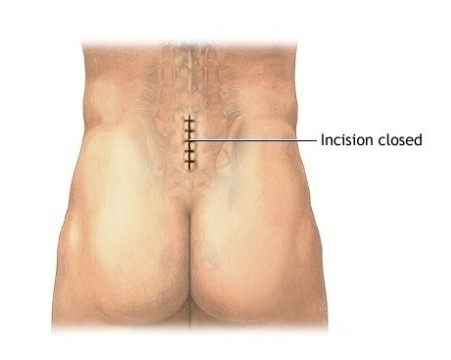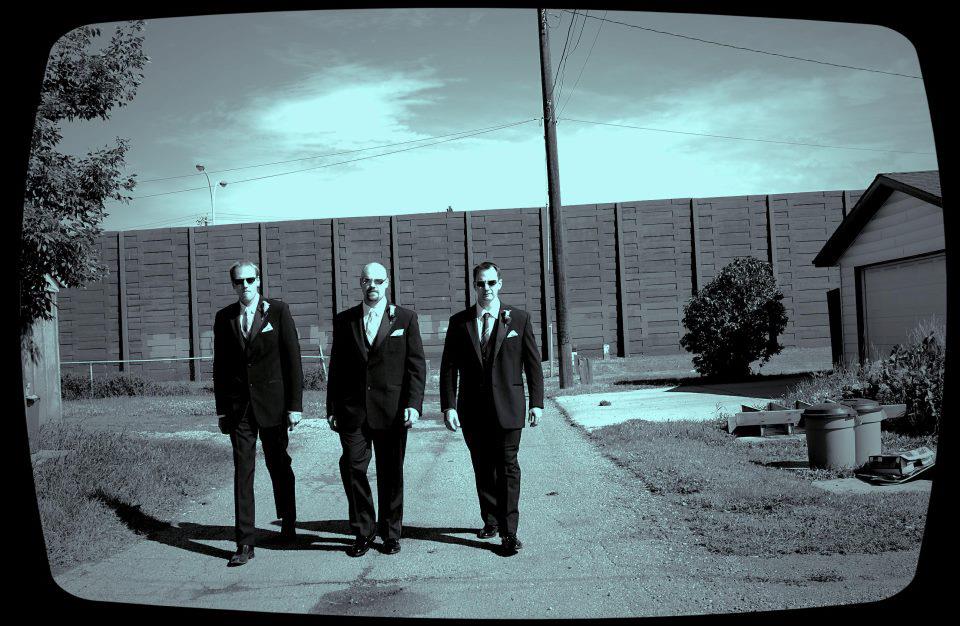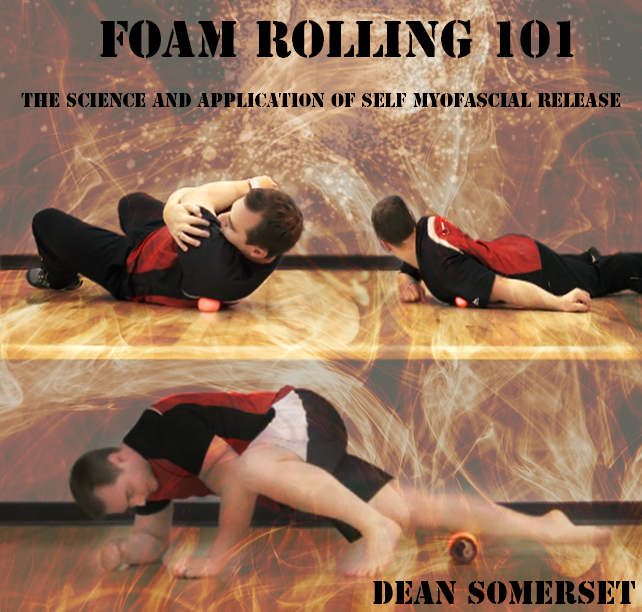Why Fascia is Necessary, and Why Caring for it Is Important Too
When I was a young boy, probably either 4 or 5, my dad wound up hurting his back at work. It was a pretty bad one too. I remember he had to spend a few months on the couch, unable to really move too much, while he awaited surgery. It turned out being a disc herniation and a pretty bad one at that. When he got in to surgery (this was before the time of arthroscopic surgery) his procedure involved a significant amount of tissue damage.
Part of it involved severing the transverse abdominis, as well as cutting out a section of his thoracolumbar fascia. I’m sure every therapist reading this is trying to pick their jaw up off the keyboard or desk after reading that, but it’s true. I think the total fascia removed was about 4 x 3 centimeters, and at the time it was considered useless tissue that just held the good stuff together.
A open discectomy to remove the extruded segment of the disc and repair what part of the disc remained was the common procedure 30 years ago. It was a delicate, involved surgery that had a long recovery time and very little in terms of follow up treatment, especially in a small town. Physical therapy was minimal, and most of his recovery was spent in a state of bed rest to allow healing to occur without stress to the area. No exercise, no stretching, no massage, nothing.
As a result of the surgical intervention, the pressure on his nerve was reduced and he could walk again, get back to work, and continue to provide for his young family that were hell bent on becoming monstrously large and incredibly good looking.
The surgery fixed the disc, but it left him with some pretty significant issues, such as a lack of a transverse muscle (which means his other abs have to compensate to find the missing stability), a tonne of scar tissue through his low back, chronic pain, and the occasional spasm as things shift around.
Knowing what we know now about rehab and surgery today, his best bet would have been a microdiscectomy, which uses arthroscopic technology to limit tissue damage around the area, coupled with a more aggressive treatment program to help regain strength, stability, and function through the area compared to bed rest.
I’ve been fortunate enough to work with a bunch of clients who have gone through both types of discectomy at various times. Some had it a long time ago and received similar follow up, bringing them in to me 20 or 30 years after surgery and looking to get or stay fit, and others are fresh from their physio having had a microdiscectomy just a few weeks earlier.
In both cases, there’s reduced movement, delayed firing of core muscles, guarding, and all the fun stuff you would see with injury compared to an uninjured client, but in the case of microdiscectomy, they tend to have much better range of motion through the spine and much better control compared to those who had undergone the open discectomy. The resultant damage to the soft tissue surrounding the area from an open surgery cannot be avoided, and tends to be permanently altered.
Another example of this quantum shift in surgical procedures is with ACL reconstructions. Previous surgeries involved an open type surgery which left a massive scar, while modern surgeries are through arthroscopy and involve just 3 or 4 small punctures to feed the scopes. The scar tissue formation from the open surgeries is typically very immobile and affects the strength and function of the knee for the life of the individual.
The impact of soft tissue healing on musculoskeletal health is undeniable and one of the major rocks to cover when working on regaining strength and function following a major injury. Stretching can only do so much as the tissues are bound and unable to slide due to excessive crossbridge formations of collagen. This leads to a very stiff and very stable structure to heal without further damage, but also a structure that doesn’t glide and slide easily to allow for necessary movement.
This sliding of tissues is one of the main benefits of something like massage therapy and other manual therapies for healing following. The compression and shear forces applied to the layers of tissue help to regain mobility that can’t be found with basic exercise.
However, one way you can gain mobility without a massage (though not as deep and effective as a massage) is with self myofascial release techniques using tools like a foam roller, rumble roller, stick, or lacrosse ball. The application of force to soft tissue can help to promote the sliding and gliding of tissue, fluid perfusion into the area, and promote better health of the tissues that can now move easier than before.
[embedplusvideo height=”477″ width=”600″ editlink=”http://bit.ly/1hgF5Ab” standard=”http://www.youtube.com/v/hBq9G0aygBE?fs=1″ vars=”ytid=hBq9G0aygBE&width=600&height=477&start=&stop=&rs=w&hd=0&autoplay=0&react=1&chapters=¬es=” id=”ep3397″ /]
One of these soft tissues is one I’ve talked about a fair bit before: fascia. It’s role in the muscular system was previously considered to be just useless tissue that held everything together, which is why it was cut out and tossed when my dad had his surgery. Now we know it had a lot to do with the health of the system, such as pressure and position sensors, contractile properties, tension production through stretch, and a bunch of others.
Serge Gracovetsky did an amazing presentation in the International Fascial Congress (yes, that’s really a thing), and it was videoed, broken into 3 parts, and put on to Youtube. I put it in here for all my anatomy geeks who want more info from an amazing teacher.
[embedplusvideo height=”365″ width=”600″ editlink=”http://bit.ly/1hgxstu” standard=”http://www.youtube.com/v/B-SMUA3QfVw?fs=1″ vars=”ytid=B-SMUA3QfVw&width=600&height=365&start=&stop=&rs=w&hd=0&autoplay=0&react=1&chapters=¬es=” id=”ep7177″ /]
[embedplusvideo height=”365″ width=”600″ editlink=”http://bit.ly/1hgxykM” standard=”http://www.youtube.com/v/fLNZCNM8XtU?fs=1″ vars=”ytid=fLNZCNM8XtU&width=600&height=365&start=&stop=&rs=w&hd=0&autoplay=0&react=1&chapters=¬es=” id=”ep5336″ /]
[embedplusvideo height=”365″ width=”600″ editlink=”http://bit.ly/1hgxCB7″ standard=”http://www.youtube.com/v/dZBjfAmmkp4?fs=1″ vars=”ytid=dZBjfAmmkp4&width=600&height=365&start=&stop=&rs=w&hd=0&autoplay=0&react=1&chapters=¬es=” id=”ep3387″ /]
Note the third video as he talks about the importance of spinal flexion, lordosis, and forward lean in terms of translating load between the muscle and fascia.
Because of a lot of the recent advances in the science and research of this amazing tissue, many fitness professionals are involving much more soft tissue work with their clients than ever before. What was once a rarity found in a dusty corner, the foam roller is now as common in a gym setting as a squat rack. Our gym started with only one roller when I started and now has a collection of 10, plus other tools, and they’re on a constant rotation throughout the day with trainers and regular members alike.
The good news is more people are using them, but the bad news is not everyone knows how to use them for the best benefits possible. Trainers don’t even understand what to do with them. I can’t tell you how often I’ve rounded the corner of my gym to the mats where the rollers are only to see someone looking like they’re trying to start a fire on their IT band by speed-rolling at 90 miles an hour while holding their breath the entire time, or worse a trainer pushing the roller onto their client to do it for them. That’s just a good way to bend a roller and make you look like a tool.
To roll out to produce a release of stiff and ungliding tissues that may be neurally charged and actively contracted, you only have to do 3 things:
- go slow
- breathe
- don’t make it hurt
There’s also a system of interconnectivity in the way rolling in a specific pattern can produce the best results as well. For instance, rolling the bottom of your feet and calves can produce a dramatic improvement in the ability to touch your toes from standing.
I’ve had some great results with my clientele in rolling, especially with chronic issues from old injuries that have reduced their mobility dramatically. Many people use it as a warm up to get the body moving, and with basic goniometric measurements it tends to produce some great benefits. With more gross movements like a squat or an overhead reach, it also produces some significantly noticeable improvements in many people. It works well with a lot of people, therefore I like it.
Because there are specific methods to produce the best results, and also a body of scientific research that discusses the optimal way to take care of fascia, create mobile soft tissues, and produce range of motion and strength improvements all from the application of a simple piece of foam, I put together a 6 hour video resource on the topic, and am practically giving it away this week only. Foam Rolling 101 is the only product on the market that has this level of specific application and information about how to best use this tool to get the most benefit.
>===Click HERE for more info and to get your copy ===<
It’s on sale until Sunday evening, so act quickly.





5 Responses to Why Fascia is Necessary, and Why Caring for it Is Important Too